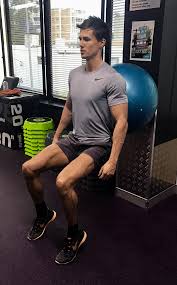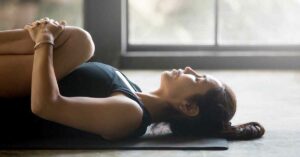If you’re like most people, you probably don’t think too much about your VMO muscle. But the truth is, this muscle is extremely important – especially if you’re interested in keeping your body healthy and looking good. In this blog post, we will discuss what the VMO muscle is, why it’s important, and how to strengthen it. We’ll also provide some tips on how to incorporate VMO exercises into your daily routine. So whether you’re a fitness enthusiast or just someone who wants to stay healthy, read on for all the info you need on the VMO muscle!
Contents
Understanding VMO Muscle

The VMO muscle (Vastus Medialis oblique) is a teardrop-shaped muscle located on the inner side of the thigh. It is one of the four muscles that make up the quadriceps, the group of muscles responsible for straightening the leg at the knee.
While the VMO muscle is often overshadowed by its more famous counterpart, (the “teardrop” on the outer side of the thigh), it is an important muscle in its own right. The VMO muscle stabilizes the knee joint and helps to prevent knee injuries such as patellar subluxation (dislocation) and patellofemoral pain syndrome (runner’s knee).
What Are The Functions Of VMO Muscle?
The functions of VMO muscle are as follows:
1. VMO muscle stabilizes the patella in the femoral groove during knee extension.
2. It assists in keeping the patella tracking straight within the femoral groove during knee movement.
3. Contracts to help extend (straighten) the knee joint.
4. It also helps to abduct (move away from the midline) and medially rotate (turn inward) the thigh at the hip joint.
VMO muscle assists in knee extension by providing an eccentric force to decelerate the patella as it moves up the femoral groove.
So these are the functions of the VMO muscle.
Why Is VMO Muscle Important?
VMO is the largest and most powerful part of your quadriceps muscle group. It’s responsible for stabilizing your knee and helping you extend (straighten) your leg.
A strong VMO is important for preventing knee pain and injuries, such as patellofemoral pain syndrome (PFPS) and patellar tendinitis.
The VMO muscle is also important for athletes, particularly those who participate in sports that involve running, jumping, and quick changes in direction (such as basketball and soccer). Strong VMO muscles can help improve your performance and decrease your risk of injuries.
What Happens If Your VMO Muscle is Weak?
If your VMO muscle is weak, it can lead to a condition called patellofemoral pain syndrome (PFPS). PFPS is a condition that causes pain around the kneecap. The kneecap sits in a groove at the end of the thighbone (femur). The VMO muscle helps to stabilize the kneecap in this groove. If the VMO muscle is weak, it can cause the kneecap to track improperly and rub against the bone, which leads to pain.
PFPS is a common condition that affects people of all ages. It is seen more often in women than men and usually affects people between the ages of 30 and 50.
How do you strengthen your VMO muscle?

To strengthen the VMO muscle it includes the following exercises. They are as follows:
Seated Leg Extension
This is an exercise that can be done at the gym or at home with a resistance band. Sit on a chair or bench with your legs extended in front of you. Wrap the band around your ankles and slowly raise your leg up, keeping your knee straight. Lower your leg and repeat. For example, if you are using a 10-pound weight, start with 3 sets of 10 repetitions.
Hamstring Curl with Resistance Band
This is an exercise that can be done at the gym or at home with a resistance band. Anchor the band around a sturdy post and lie facing down. Wrap the band around your ankles and curl your legs up towards your butt, keeping your hips and upper body still. Lower your legs and repeat.
Squats
This is a great exercise for overall leg strength but also works the VMO muscle. To do a squat, stand with your feet shoulder-width apart and lower your body down by bending your knees. Make sure to keep your knees behind your toes and stick your butt out as you lower down. Return to standing and repeat.
Lunges
This is another great exercise for leg strength. To do a lunge, stand with your feet shoulder-width apart and take a large step forward with one leg. Lower your body down so both knees are at a 90-degree angle. Make sure your front knee doesn’t go over your toes and keep your back straight. Return to standing and repeat with the other leg.
Step-Ups
This exercise can be done at the gym or at home with a step stool or box. Stand in front of the step and place your whole foot on top of it. Press down through your heel to raise your body up and bring your other leg up so you are standing on top of the step. Step back down and repeat with the other leg.
Leg Press
This is an exercise that is typically done at the gym but can also be done at home with a resistance band. Sit on the ground with your legs extended in front of you and wrap the band around your ankles. Press your legs down into the ground to raise your body up. Lower back down and repeat.
Doing these exercises regularly will help to strengthen the muscle and improve overall leg strength. Try to do 3-4 sets of 10-15 repetitions for each exercise. Add weight or resistance as needed to make the exercises challenging but not too difficult.
Conclusion
It may be concluded that VMO muscle is important for knee function and injury prevention. It is therefore recommended that you maintain strong VMO muscles to keep your knees healthy and prevent knee injuries. You can do VMO-targeted exercises such as squats and lunges. You should also avoid knee injuries by using proper form when exercising and wearing supportive shoes.
Speak with a physical therapist or certified personal trainer if you have any questions about how to properly perform these exercises.
Physical Therapy help patients recover from pain. If you’re experiencing Back pain, Shoulder pain, Knee pain, Neck pain, Elbow pain, Hip pain, or Arthritis pain, a physical therapist at MantraCare can help: Book a physiotherapy session.


